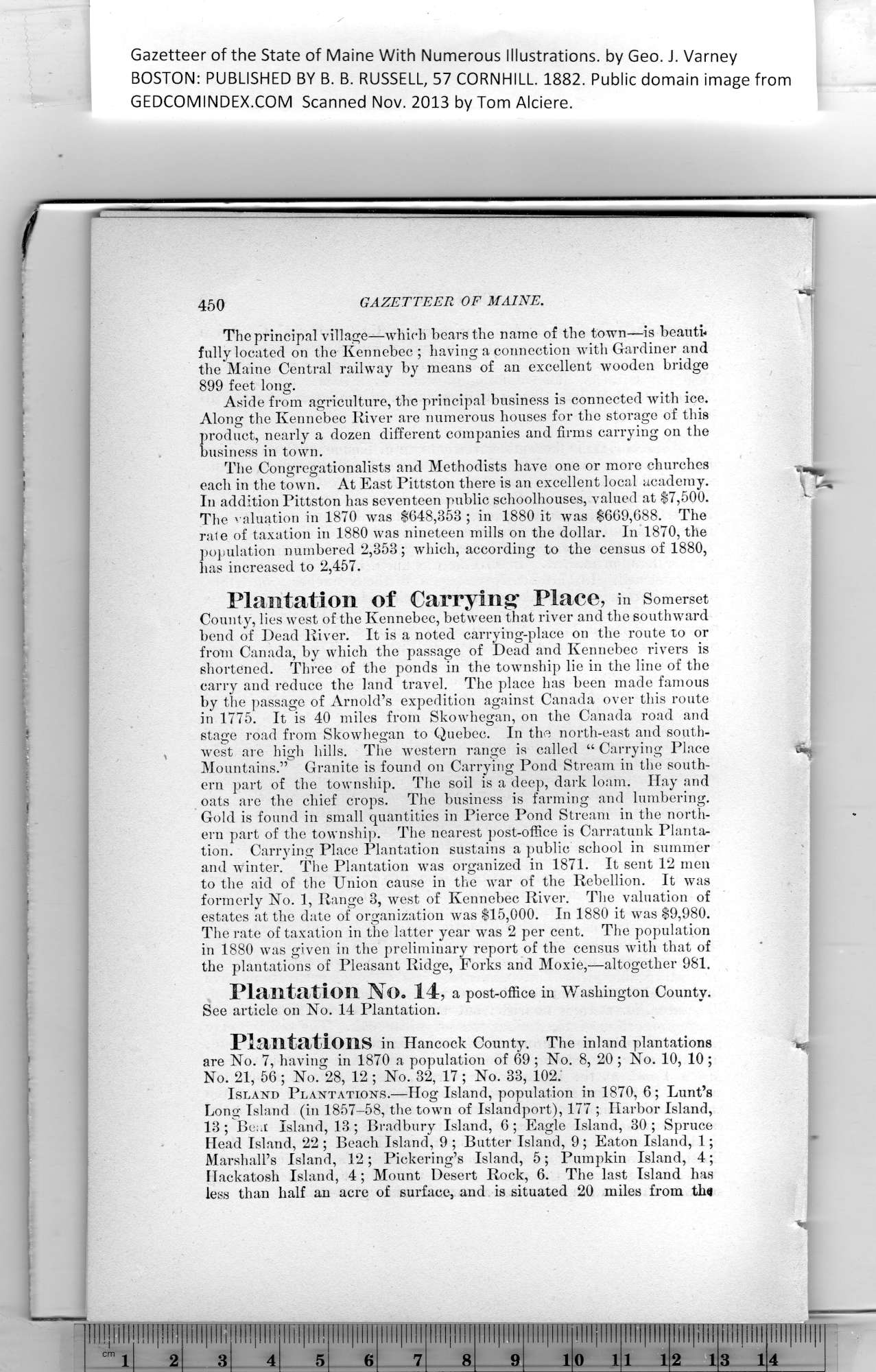Click on the image to view a larger, bitmap (.bmp) image suitable for printing. HOME PAGE ... REFERENCE PAGE ... THIS GAZETTEER’S PAGE |

Click on the image above for a larger, bitmap image suitable for printing.
|
Gazetteer of the State of Maine With Numerous Illustrations, by Geo. J. Varney BOSTON: PUBLISHED BY B. B. RUSSELL, 57 CORNHILL. 1882. Public domain image from 450 GAZETTEER OF MAINE. The principal village—which bears the name of the town—is beauti* Aside from agriculture, the principal business is connected with ice. Along the Kennebec River are numerous houses for the storage of this The Congregationalists and Methodists have one or more churches In addition Pittston has seventeen public schoolhouses, valued at $7,500. The valuation in 1870 was $648,353 ; in 1880 it was $669,688. The Plantation of Carrying* Place, in Somerset County, lies west of the Kennebec, between that river and the southward Mountains.” Granite is found on Carrying Pond Stream in tlie south- Gold is found in small quantities in Pierce Pond Stream in the north- The rate of taxation in the latter year was 2 per cent. The population Plantation No. 14, a post-office in Washington County. See article on No. 14 Plantation. Plantations in Hancock County. The inland plantations ^ are No. 7, having in 1870 a population of 69 ; No. 8, 20 ; No. 10, 10; No. 21, 56 ; No. 28, 12 ; No. 32, 17 ; No. 33, 102. Island Plantations.—Hog Island, population in 1870, 6; hunt’s 13; Bear Island, 13 ; Bradbury Island, 6; Eagle Island, 30; Spruce Marshall’s Island, 12; Pickering’s Island, 5; Pumpkin Island, 4; Hackatosh Island, 4; Mount Desert Rock, 6. The last Island has PREVIOUS PAGE ... NEXT PAGE This page was written in HTML using a program written in Python 3.2 |